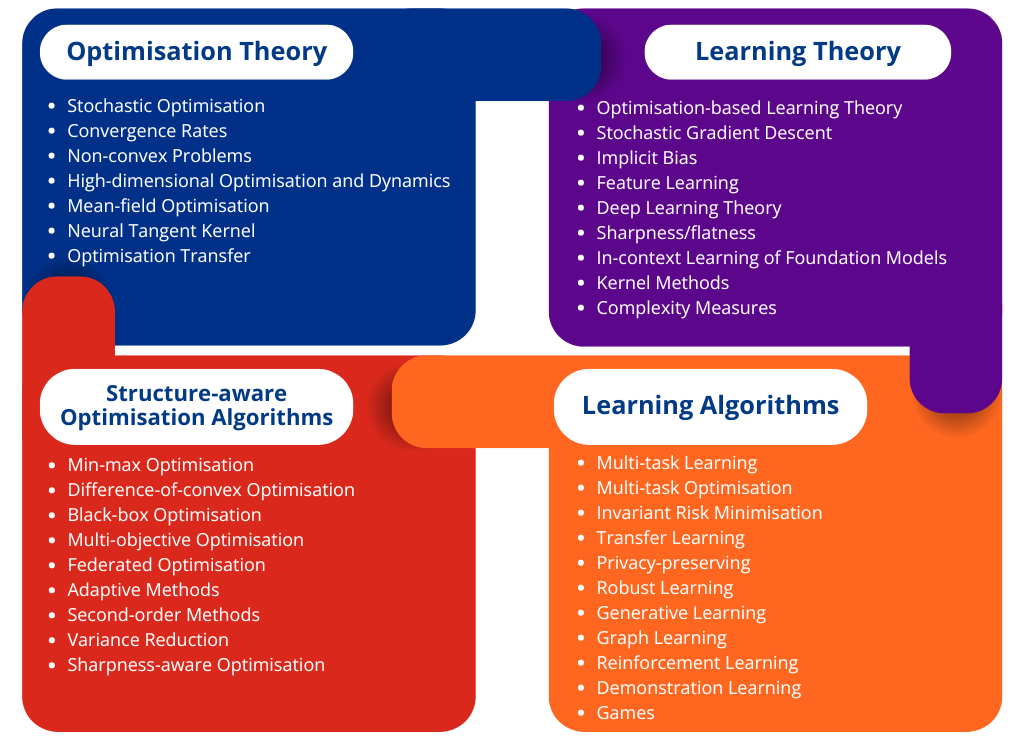Research Pillars
- AI for Science
- Theory and Optimisation in AI
- Artificial General Intelligence
- Sustainable AI
- Resilient & Safe AI
Theory and Optimisation in AI
Artificial
intelligence has achieved remarkable success in many tasks, such as object and
speech recognition, game AI, robot control, drug discovery, molecule design,
and foundation models. This success is attributed to massive datasets, huge
computational resources, and the great expressive power of high-dimensional
models such as deep neural networks. However, building a large model on a
massive dataset entails significant costs. Hence, reducing the required amount
of data and compute remains an imperative research direction. In short, the next
generation learning methodologies must be:

Optimisation forms the foundation of many AI applications, as training AI models is essentially similar to solving a high-dimensional optimisation problem. Hence, improving optimisation performance and analysing its behaviour could directly bring the above features to many learning methodologies.
Optimisation-based Learning Theory
While overparameterised
models, such as deep neural networks, offer many solutions that fit the
training dataset, their generalisation capabilities can vary. As the nature of
the solution obtained is dependent on the optimisation method, all aspects,
including optimisation, modelling, and regularisation need to be studied
comprehensively to understand the mechanism behind modern AI systems. Through optimisation-based
learning theory, we aim to understand the reasons behind the superior
performance of deep learning, including its high prediction accuracy, exceptional
adaptability of foundation models to downstream tasks, and ability to perform in-context
learning.
Learning problems often exhibit special problem structures depending on their purpose and context. Therefore, it is important to design optimisation methods that utilise these structures to enhance performance.
Here, we focus on the
following research areas:
In addition to the above, we study the following research topics to develop theoretically grounded data- and resource-efficient optimisation methods applicable to various problems:

We will also explore various applications with the goal of making significant impact across a wide range of scientific fields. For instance, one objective is to provide guidelines for training and fine-tuning foundation models through theoretically grounded learning methodologies. Consequently, this approach could streamline the training of foundation models and reduce the significant costs required.
A*STAR celebrates International Women's Day

From groundbreaking discoveries to cutting-edge research, our researchers are empowering the next generation of female science, technology, engineering and mathematics (STEM) leaders.
Get inspired by our #WomeninSTEM
.png?sfvrsn=d3a97fa3_12)